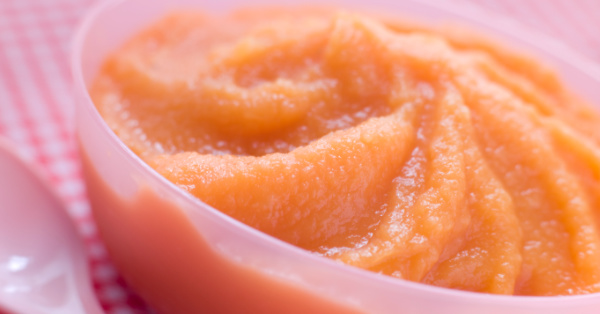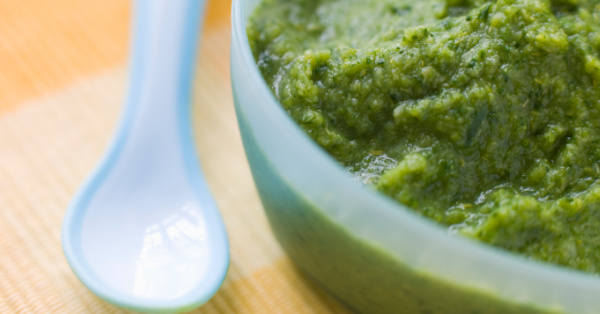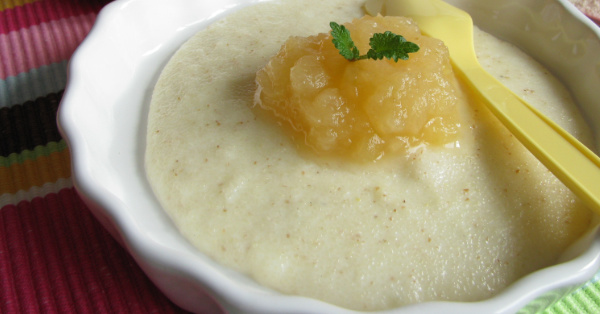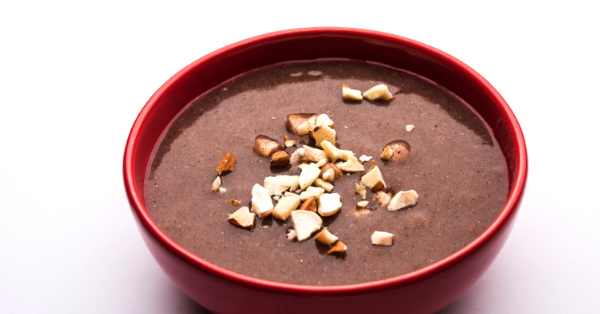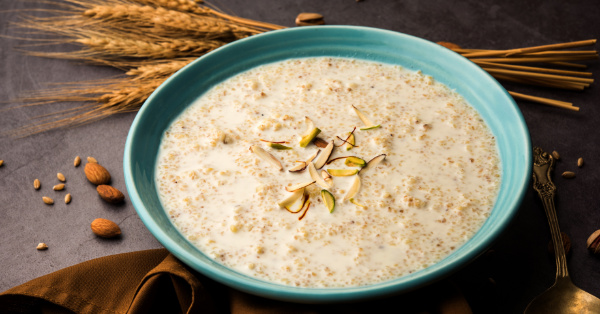Complementary Feeding
Around the age of 4-6 months, an infant’s need for energy and nutrients starts to exceed what is provided by breast milk, and complementary foods are necessary to meet those needs.
Complementary Feeding
Nutrition is a crucial part of the development and health of children. It ensures robust immune systems, improved learning. Healthy children live and learn better. Individuals with optimum nutrition are more productive and can fully realise their potential.
Around the age of 4-6 months, an infant’s need for energy and nutrients starts to exceed what is provided by breast milk, and complementary foods are necessary to meet those needs. An infant of this age is also developmentally ready for other foods. This transition is referred to as complementary feeding.
Frequently Asked Questions on Complementary Feeding
- Every community has a staple food—the food that forms the main bulk; for example, wheat, rice etc.
- Staple foods can be cooked, served, and are good sources of energy and protein.
No. Around the age of 4~6 months, an infant’s need for energy and nutrients starts
to exceed what is provided by breast milk, and complementary foods are
necessary to meet those needs. An infant of this age is also developmentally
ready for other foods.
- At the six month mark, baby’s body and brain is growing rapidly and requires
more energy and nutrients than what breast milk alone can provide. - This is the right time to introduce complementary feeding.
- Delay in introduction of complementary foods affects the child’s growth and
increases the risk of malnutrition.
To support physical and brain development feed a variety of foods are to be introduced
- Do not add salt or sugar
- Non-vegetarian can include egg, fish, chicken etc.
- Do not feed child junk foods such as chips, packaged juice, biscuits, sweets, or savouries.
- Prefer the regular family food that is locally available and culturally acceptable rather than cooking special foods.
- The recent concept of “Baby-led Weaning”, i.e., feed as per baby’s choice shall be practiced.
- Easily digestible and nourishing food.
- Taste and palatability of food for the infant.
- Start feeding with small amounts and gradually increase the quantity with the increasing age of the child.
- The consistency, frequency, and variety should change as the infant grows, depending upon the requirements and the feeding abilities.
- A variety of nutrient-rich foods shall be offered to ensure the body requirements.
- During illness, the principle of more fluids including frequent breastfeeding and encouragement to eat soft, favourite foods should be followed. After illness, promote feeding more often than usual so as to replenish the deficient intake.
- The child should be fed from a separate bowl and all utensils used shouldbe thoroughly washed
- Look into the eyes while feeding the child. Be patient, encouraging and loving.
- Do not force feed
- Self-feeding must be encouraged early on
- At 6 months of age, start with pureed, mashed, and semi-solid foods.
- Most infants can eat “finger foods” around 8 months.
- Most children can eat the family foods by the end of 1 year.
- Avoid foods that may be lodged in the windpipe (such as nuts, grapes, and raw carrots) and can result in choking.
A combination of continued breastfeeding for at least 1- 1.5 years along with timely and adequate complementary feeding is the most reliable option to provide optimum nutrition to the child. As the child grows, increase the number of times that the child is fed: 2–3 meals per day for infants 6–8 months of age and 3–4 meals per day for infants 9–23 months of age, with 1–2 additional snacks as required; use fortified complementary foods or vitamin-mineral supplements as needed and gradually increase food consistency and variety. Over and above the nutritional benefits, complementary feeding can strengthen the bond between children and their parents.
Baby Developmental & Food Stages
What to feed your baby & when
According to experts, most foods are OK to be given to a baby in the first year, as long as they’re properly prepared. Here are some guidelines for food preparation at each stage, as well as ideas for some foods to offer to your baby.
4-6 Months
Appropriate Food Texture: Strained, PuréedMain source of nutrition: Breast milk or formula
Check with pediatrician first.
Start tastes of cereals, fruits and vegetables.
Single ingredient foods.
Very thin consistency, smooth purees with zero chunks.
6-8 Months
Appropriate Food Texture: Strained, Puréed, Smooth, MashedMain source of nutrition: Breast milk or formula
Slightly thicker consistency than Stage 1 foods, pureed with a bit more texture.
1/4 cup of grains / cereals, twice a day.
2 tablespoons of vegetable purée, twice a day.
2 tablespoons of fruit purée, twice a day.
1 tablespoon of meat or poultry purée, twice a day.
8-10 Months
Appropriate Food Texture: Grated, Minced, Lumpy, DicedMain source of nutrition: Breast milk or formula
Thick blended foods with chewable chunks or small cut-up pieces of easily chewed table foods.
1/2 cup of vegetables per day, offering a variety.
1/2 cup of fruits per day, offering a variety.
1 ounce of meat or beans a day.
1 ounce of grains a day.
10-12 Months
Appropriate Food Texture: Soft foods, Finely chopped foods that soften or dissolve in mouth.Begin weaning from breast milk or formula to whole milk.
(Almost) anything goes, as long as it’s cut up in small pieces and/or cooked until very soft to make it easy to chew.
3 meals and 2-3 snacks a day.
2 cups of dairy a day, served in 1/4 to 1/2 cup servings.
2 ounces of grains, with half of the grains as whole grains.
3/4 cup of vegetables.
1 cup of fruits.
1.5 ounces of meat/beans, thoroughly cooked and easy to chew.
Whole milk or water to drink.
Some Important Tips for Parents
Principles to be followed
- Start complementary feeds after completion of 180 days.
- Continue breastfeeding up to 2 years of age along with appropriate complementary feeding.
- Give semi-solid food (Avoid watery food such as soups, fruit juices, and animal milk)
- Prefer home-made food
- Prefer balanced food prepared using locally available ingredients. (Cereal + pulse + vegetables)
- Introduce one food at one time; once child starts accepting it, introduce another preparation.
- Addition of ghee, oil, fats adds to energy, and palatability of food (except in children who are overweight or obese)
- Respect the child’s choice and preferences regarding the food.
- Avoid force feeding
- Monitor the weight of the child.
Things to be avoided
- Avoid delay in starting complementary feeding.
- Avoid outside, artificial, packaged, and commercial and Junk foods.
- Avoid foods with excess of sugar, salt, and trans-fatty acids.
- Avoid ultra-processed and refined foods.
- Avoid feeding while watching television or mobile.
- Feeding should not be an unpleasant experience.
Nutritious Complementary Feeding Recipes for Babies
According to experts, most foods are OK to be given to a baby in the first year, as long as they’re properly prepared. Here are some guidelines for food preparation at each stage, as well as ideas for some foods to offer to your baby.
Please Note:
- Always check with your paediatrician before introducing any new food.
- Charts presented above are prepared to give an idea of planning your baby’s meals. It should not replace the advice of your doctor.
- Before planning a diet chart, please consider your baby’s body type and other factors.
- Never introduce more than one food at a time when introducing solids to your baby.
- Check for allergy symptoms when you are introducing a new food to your baby and stop feeding your baby if you find any signs.
- If your baby is allergic to any specific ingredient, remove it from the recipe.
- Please avoid green chilies and red chilies at least till two years.
- Any sweetener (if the recipe calls for it) like sugar, jaggery etc. can be avoided until one year. Instead, sweet tasting vegetables or fruits should be preferred.
- If the recipe calls for spices, adjust it according to your baby’s age and preference.
- Sugar, salt, cow’s milk, and honey is not recommended until one year of age.
- Recipes shared above are for guidance only.
- Links to third party websites are provided in good faith, Neobliss Newborn Care / Jeevandeep Children’s Hospital are not affiliated to the websites (or the content contributors) nor do we endorse the opinions and views expressed on the website.
OUR PATIENTS SAY
I am extremely pleased by the services provided at Neobliss newborn care. The doctors and staff over there are very friendly. During covid times Dr. Avi and Dr. Shivani have both provided timely tele and video consultations for my baby.
I like the doctors here. Their diagnosis is accurate and treatments are effective. Loaded with patience, skill and affection for babies and new parents alike, it’s a reassuring team to be with.
Probably the best Paediatrician in ghatkopar. Understands all our complaints and treats them with minimal medicines. Also he made us understood how everything need not necessarily be treated with antibiotics. A very patient and Empathetic doctor
My daughter had covid and I got her treated with Dr Shivani Ranasaria. I am soo sooo satisfied. She was available all the time. All my queries and doubts were cleared positively. Video consultancy with her made it even more simpler. She checked on yaana very often. And yaana was absolutely absolutely fine very soon. I would genuinely recommend her for all your kids. Thank you so muchh!!
Very well equipped NICU with very well behaved staff. Very good doctors, especially for first time parents. Doctors are ready to answer all the silly queries first timers have. In terms of treatment, doctors explained us everything in detail with no ifs and buts. One can rely comfortably on Neobliss for newborn care.
My baby was born preterm & shifted to neobliss newborn care. was given very good care, Good staff & concerned doctors. Satisfied with the treatment given there.
